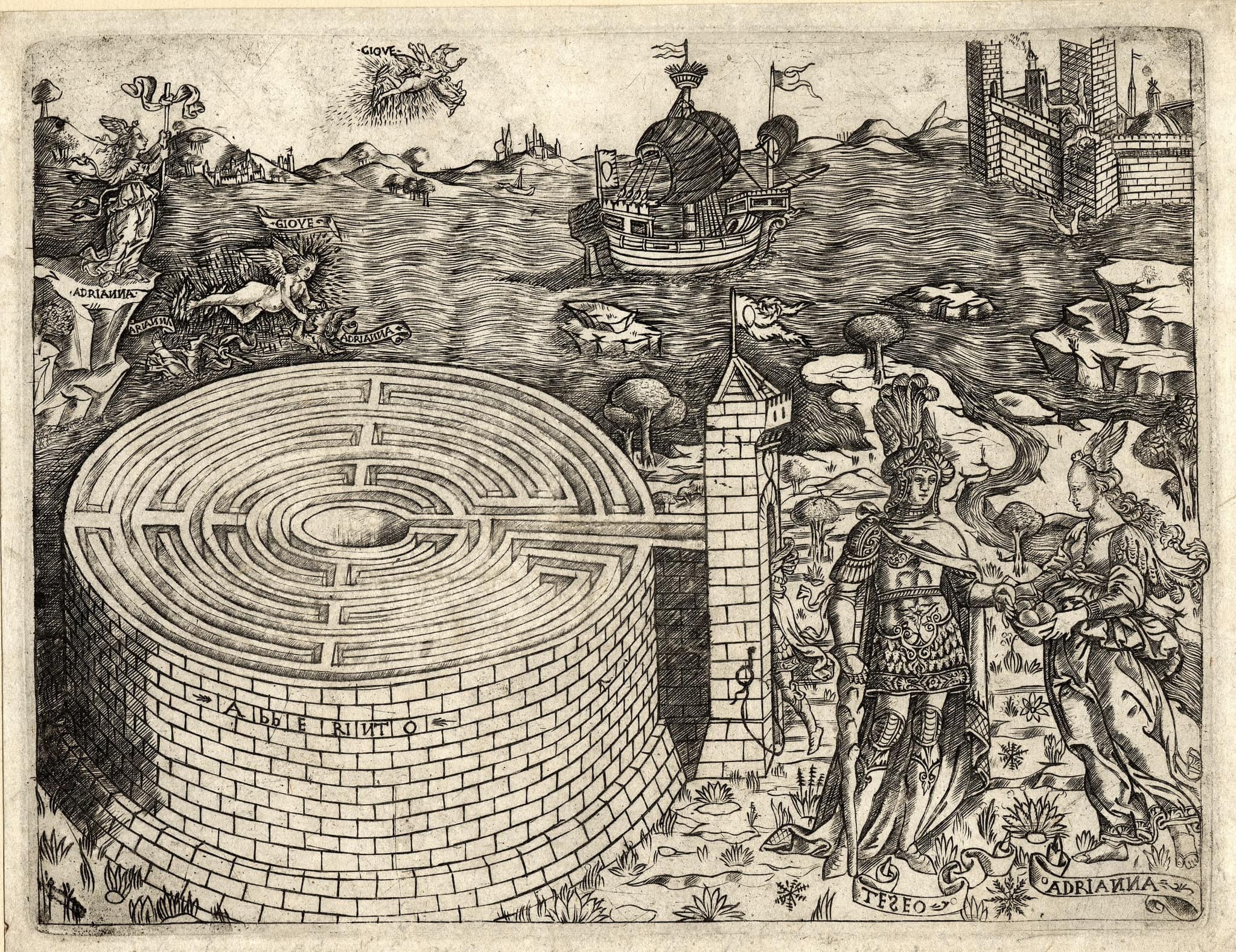
“He who ventures courageously into a labyrinth seeking to find the truth of his life is forced by its circuitous pathways to circumambulate the center of himself, to learn to relate with it and to perceive it from all sides. He can only reach it by passing through the entire interior space of the labyrinth beforehand, by relating to all of its dimensions, and integrating them all into the wholeness of his personality. In fact, in a labyrinth all passages lead into each other, making up an interconnected whole.
Uninterrupted and leaving no part out, they form the basis for life's adventure of individuation. Hermann Kern provides the following interpretation in relating such psychic processes to the figure of the labyrinth: The labyrinth is thus also a symbol of integration, individuation, of the concentration of all essential layers, aspects, and levels of meaning of a human existence. It symbolizes, among other things, the process of maturation from a one-dimensional person, fragmented into a thousand separate functions, into a rounded-out personality, composed in itself, which has found its center.” [The Labyrinth by Helmut Jaskolski]
Joseph Campbell
“The cave you fear to enter holds the treasure you seek.”
“We have not even to risk the adventure alone for the heroes of all time have gone before us.
The labyrinth is thoroughly known...
we have only to follow the thread of the hero path.
And where we had thought to find an abomination we shall find a God.
And where we had thought to slay another we shall slay ourselves.
Where we had thought to travel outwards
we shall come to the center of our own existence.
And where we had thought to be alone we shall be with all the world.” [Joseph Campbell]

Hubert Benoît
"The labyrinth of Greek mythology can be used symbolically to understand our evolution toward death-in-order-to-be-reborn, but we can only use this symbolism if we modify its traditional meaning. Our labyrinth is flat, built on the earth. There isn't any exit included in this plan. One can only get out through the center, where the Minotaur is, by a vertical trajectory. This trajectory passes through the milieu of the Minotaur and is none other but what Traditional Metaphysics calls the axis or tree of heaven. We are born, at the time of our first birth, in this center, but without having any consciousness of it.
As soon as our intellect appears, we explore the external world in our search for compensation. There are many centrifugal trajectories which are revealed as impasses sooner or later. As the explored impasses are excluded, we are hemmed in toward the center little by little. The Greeks, who humanized their gods and deified their heroes, have the Minotaur killed by Theseus. In our symbolic and metaphysical labyrinth, it is the Minotaur who devours Theseus.
Theseus again finds the axis of Heaven; he is sucked into it, up to the Divine Absolute, and liberated from the prison that was for him the labyrinth. From our habitual point of view, this exploration of the labyrinth, going from impasse-failure to impasse-failure in order to end in being devoured, is necessarily seen as a descendant life. It is through zero that the road leads toward Infinity.
In sum, in the scale of the human microcosm, Realization is a fantastic revolution. In the habitual person, the Demiurge dominates affectivity, and affectivity dominates all behavior. Realization brings an about-face that leads the intellect, which has become Cosmic mind, above affectivity and gives to it the infinite beatitude. The Demiurge now only directs the animal and vegetative part of us. What legitimizes "spiritual death" is the disappearance of all of the egotistical architecture of the reigning self." [Hubert Benoît, The Interior Realization]
Helmut Jaskolski
"He who ventures courageously into a labyrinth seeking to find the truth of his life is forced by its circuitous pathways to circumambulate the center of himself, to learn to relate with it and to perceive it from all sides. He can only reach it by passing through the entire interior space of the labyrinth beforehand, by relating to all of its dimensions, and integrating them all into the wholeness of his personality. In fact, in a labyrinth all passages lead into each other, making up an interconnected whole." [The Labyrinth by Helmut Jaskolski]
